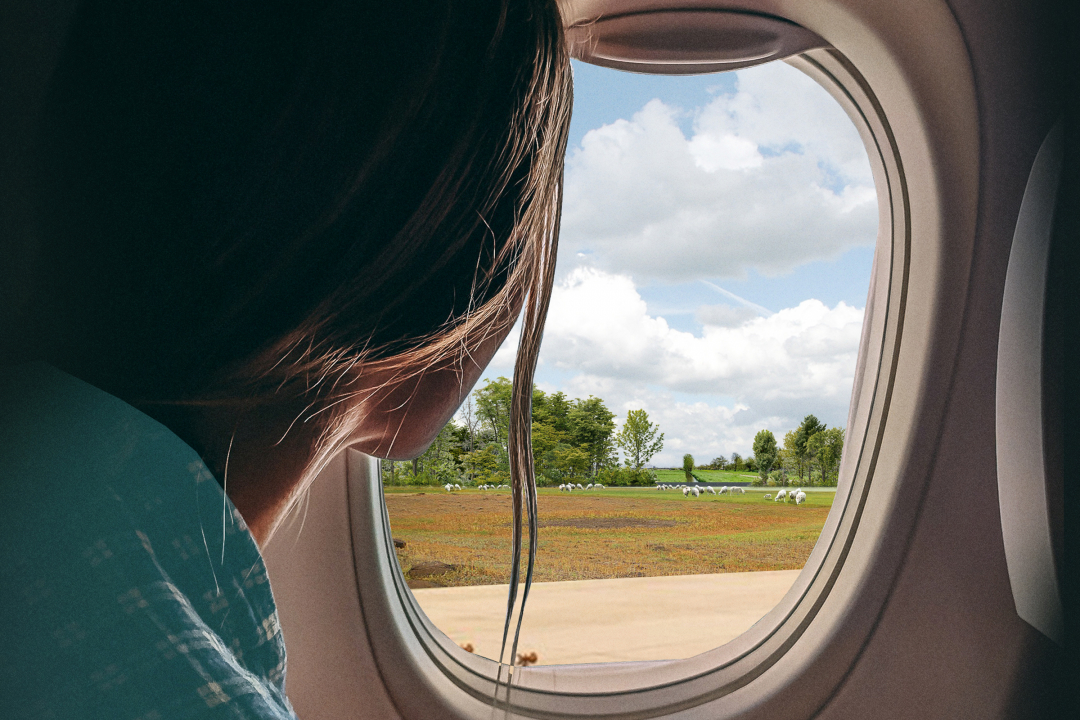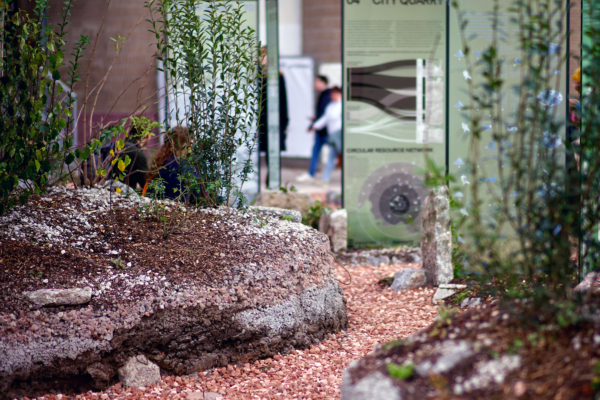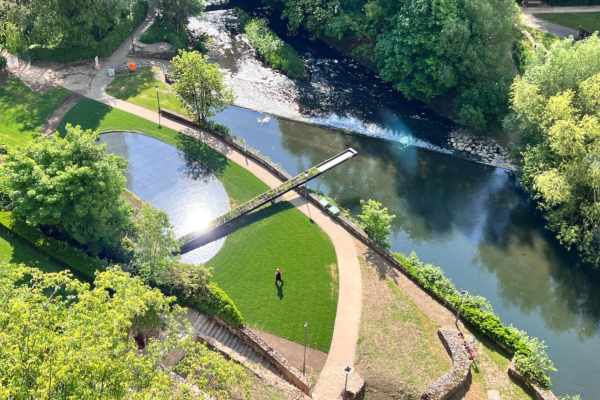Rewilding Schiphol
Amsterdam, NL
| Type | Design research |
| Design | 2021-2022 |
| Location | Amsterdam Schiphol Airport, The Netherlands |
| Size | 2700 ha |
| Client | Royal Schiphol Group |
| Team | Eric-Jan Pleijster, Artur Borejszo, Mariya Protsyk , Nerea Febré Diciena, Roberto Coccia, Simon, Verbeeck, Fabiola Mogrovejo, Lea Hartmeyer |
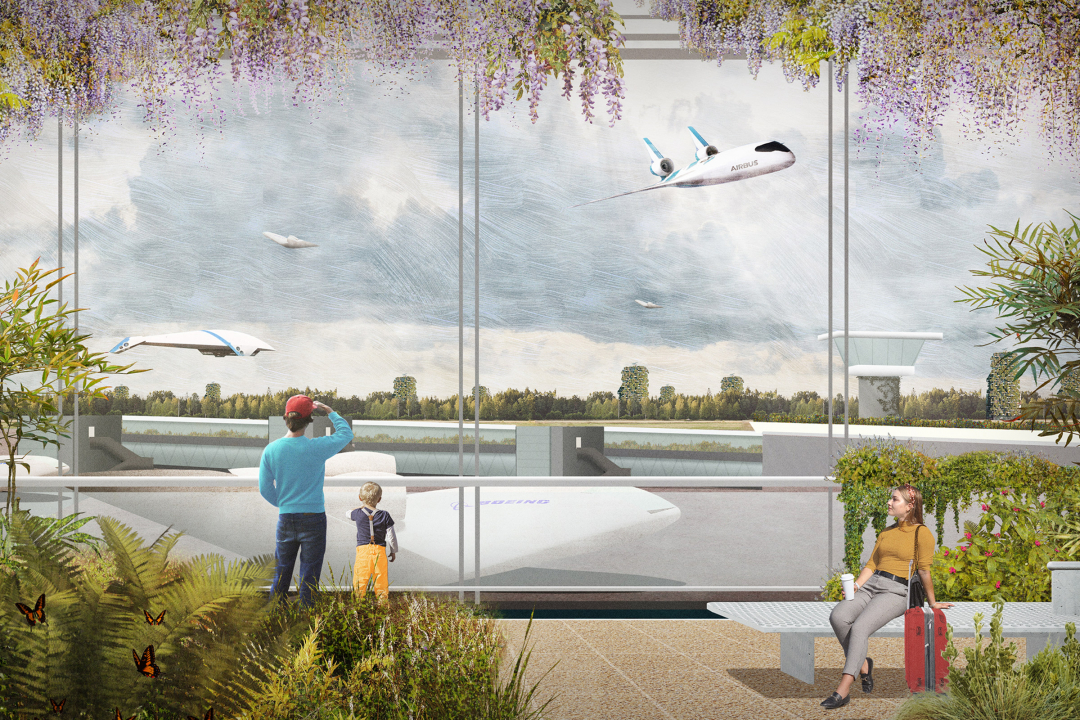
Schiphol Group approached LOLA to explore possible long-term spatial development. LOLA proposed a radical perspective in which sustainability starts with biodiversity: a species-rich landscape is a precondition for the sustainable survival of the airport. Ecology comes first!
To be sustainable, is to be biodiverse
Schiphol is struggling with the question if, and how it can develop in the near future. The central area is packed with buildings and parking, and a lot is going on at and around the national airport, from daily cancelled flights and overcrowded departure halls, to issues related to emissions and energy. This is why The Royal Schiphol Group asked five design teams, including LOLA, to explore possible long-term spatial development. The other teams involved are: 51N4E, Crimson, Studio for new realities and UNStudio.
Schiphol’s ambition is to become one of the most sustainable airports in the world, but during the design research we noticed that no biodiversity ambition was yet been linked to this ambition. On the contrary: birds are seen solely as a safety risk to Schiphol. Schiphol without birds is the utopia, Schiphol says in its wildlife maintenance policy.
We proposed a radically different perspective. Sustainability actually starts with biodiversity: a species-rich landscape is a precondition for the sustainable survival of the airport. Ecology comes first! In other words: only when soil and water, ecology and biodiversity at and around Schiphol are in order, can any further logistics and infrastructural development be considered.
Rewilding the airport
Good news: Schiphol doesn’t need to fear fauna. Instead, it should look at the benefits of a healthy airport ecosystem. Nature helps to purify the air, dampen noise, temper heat, relieve stress, and so on. We pointed out airports such as Munich, Frankfurt and Oslo, all of which are located in forests and nature reserves. With less wildlife management and more forest and wilderness, it is possible to bring airports and birds closer together.
Schiphol should rewild both the landside and the airside landscape and thus create conditions for birds in such a way that high-risk species settle elsewhere and make way for harmless birds. This requires a natural layout with, among other things, much more forest and trees, taller grasses and brushwood, and ecological management with sheep and sinus mowing. Basically Schiphol can develop itself from scarecrow to bird sanctuary.
Towards fully integrated nature
We plea for more nature, wild nature and fully integrated nature. Even at Schiphol’s bustling central area. There are plenty of opportunities to program some of the rewilded public space to program spaces afor travellers to offer them an interesting, distinctive experience from the gates to the main square in front of the departure/arrival hall. It would help if the Haarlemmermeer as a whole is given a more natural layout, so that the rewilded landscape of Schiphol can be connected to a larger ecosystem.
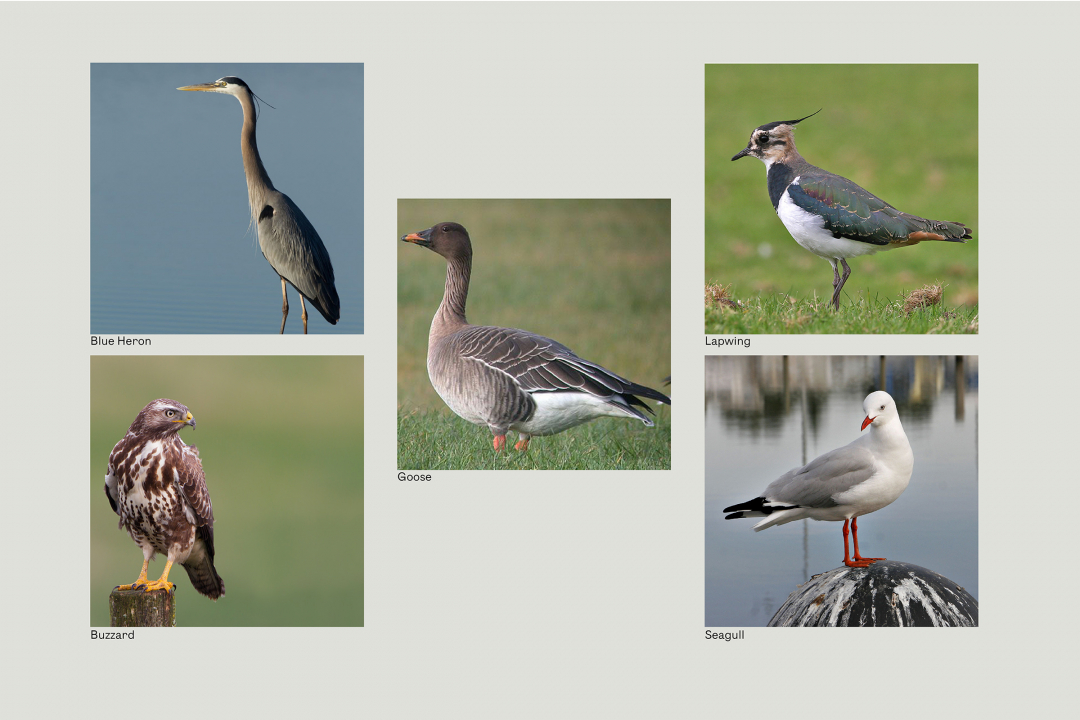
These are the big 5 that are attracted to the open flat polder landscape around Schiphol now. They are considered the most dangerous birds for a bird-strike
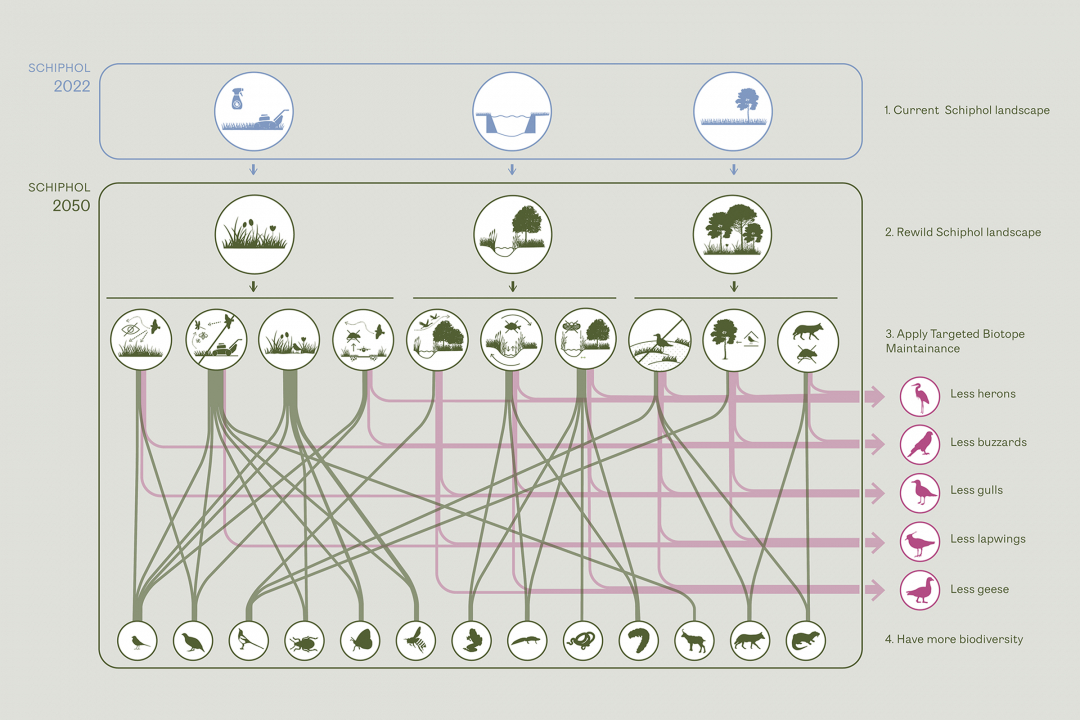
By making green more natural... there will be less hazardous birds: Targeted Biotope Maintenance
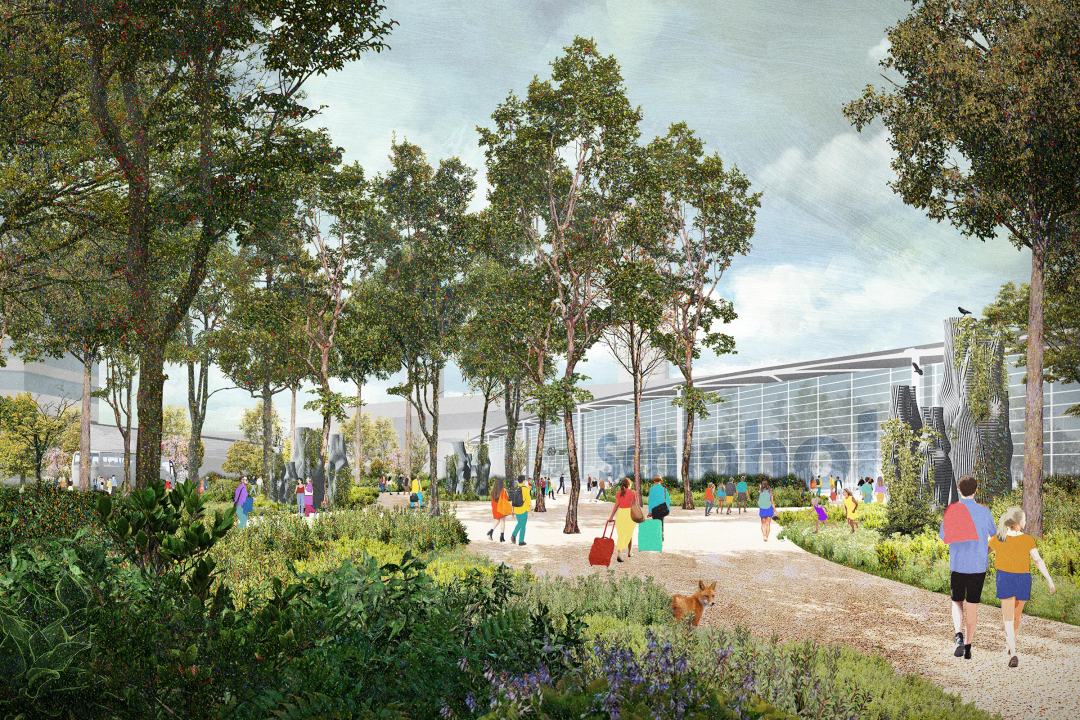
From unpleasant welcome to natural Entrance Park
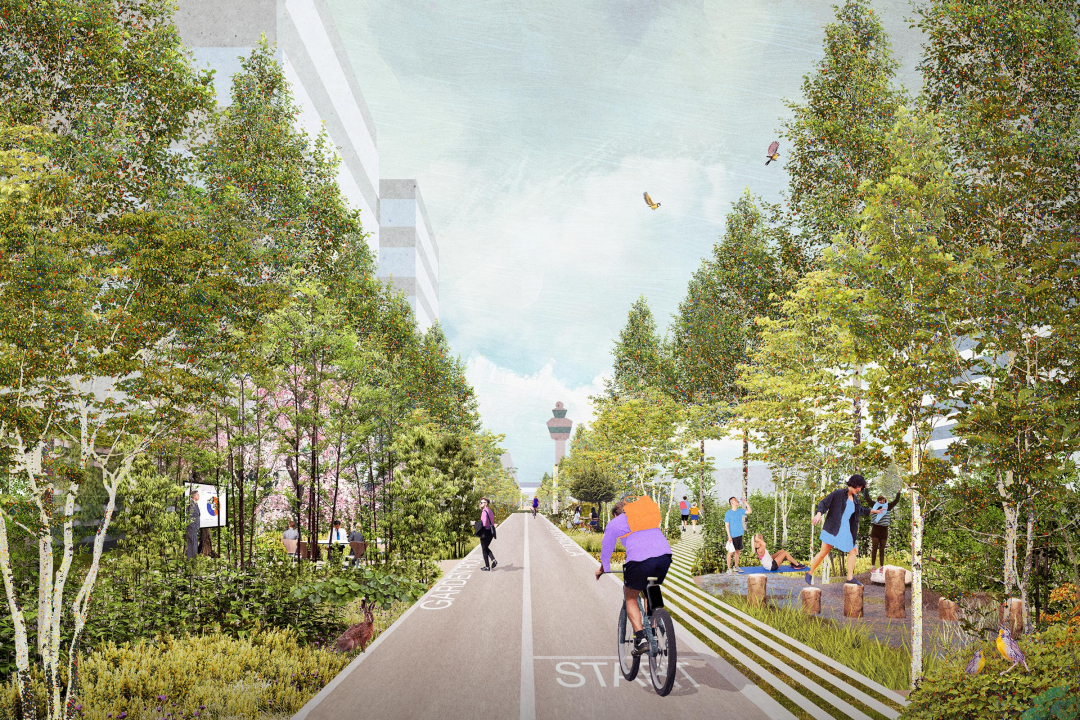
From generic office area to lively Community Axis
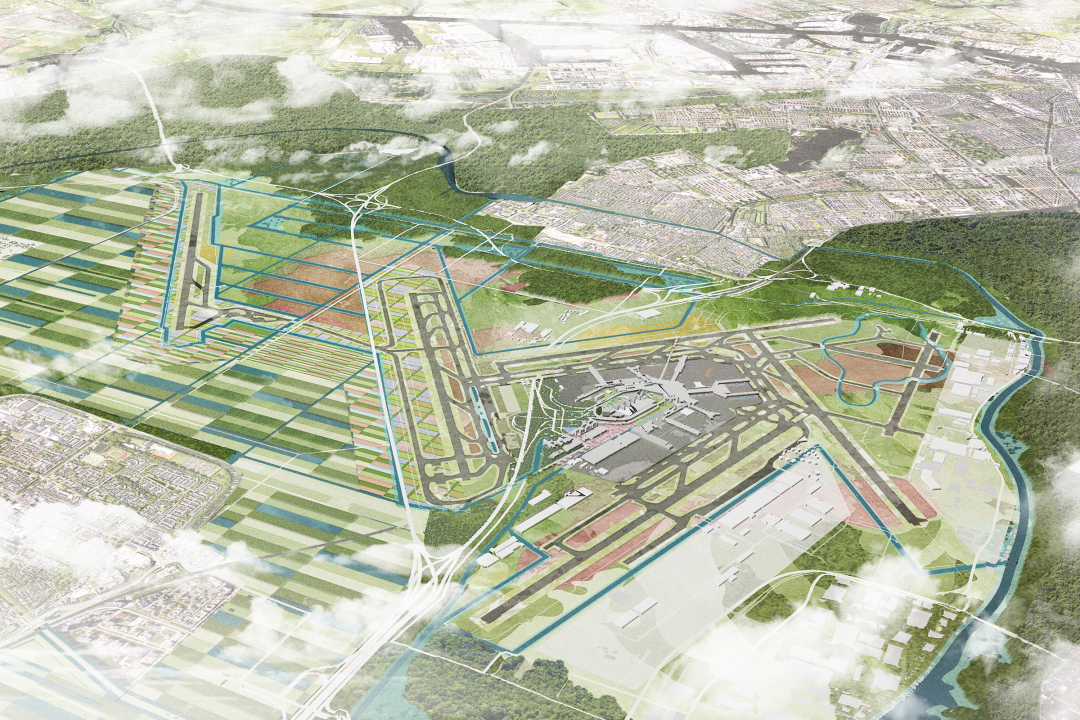
Haarlemmermeer can become a welcoming natural setting for Schiphol

Half-Earth Schiphol, what can it be like
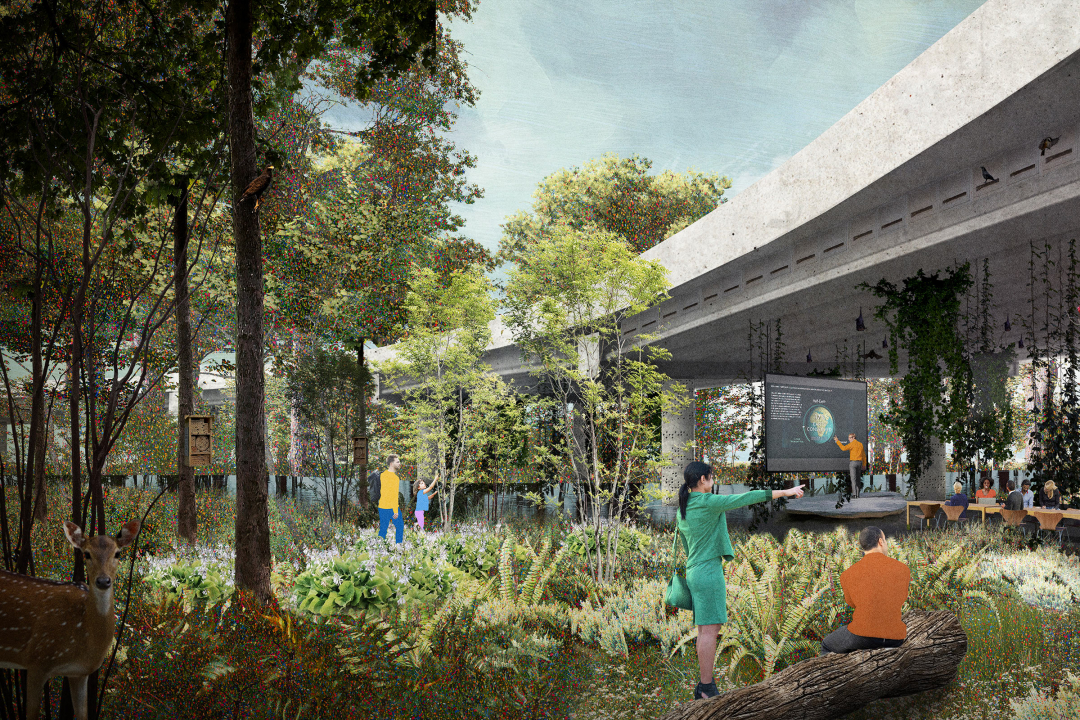
From leftover viaducts to Airport Forest
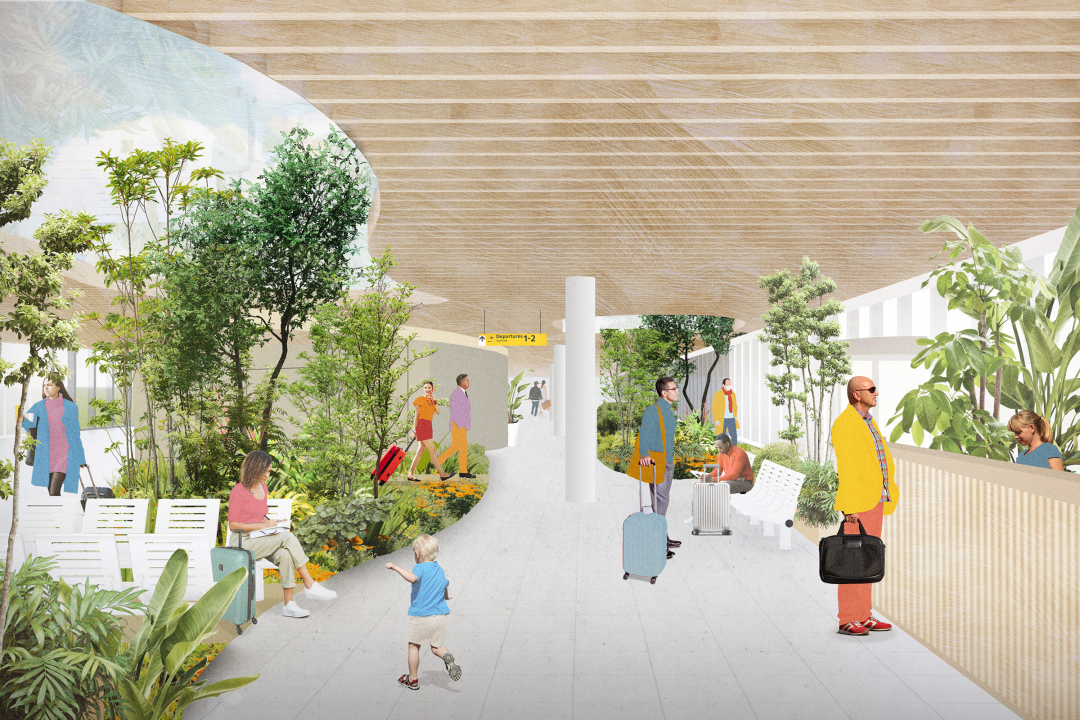
From the typical piers to a nature-based travel experience
